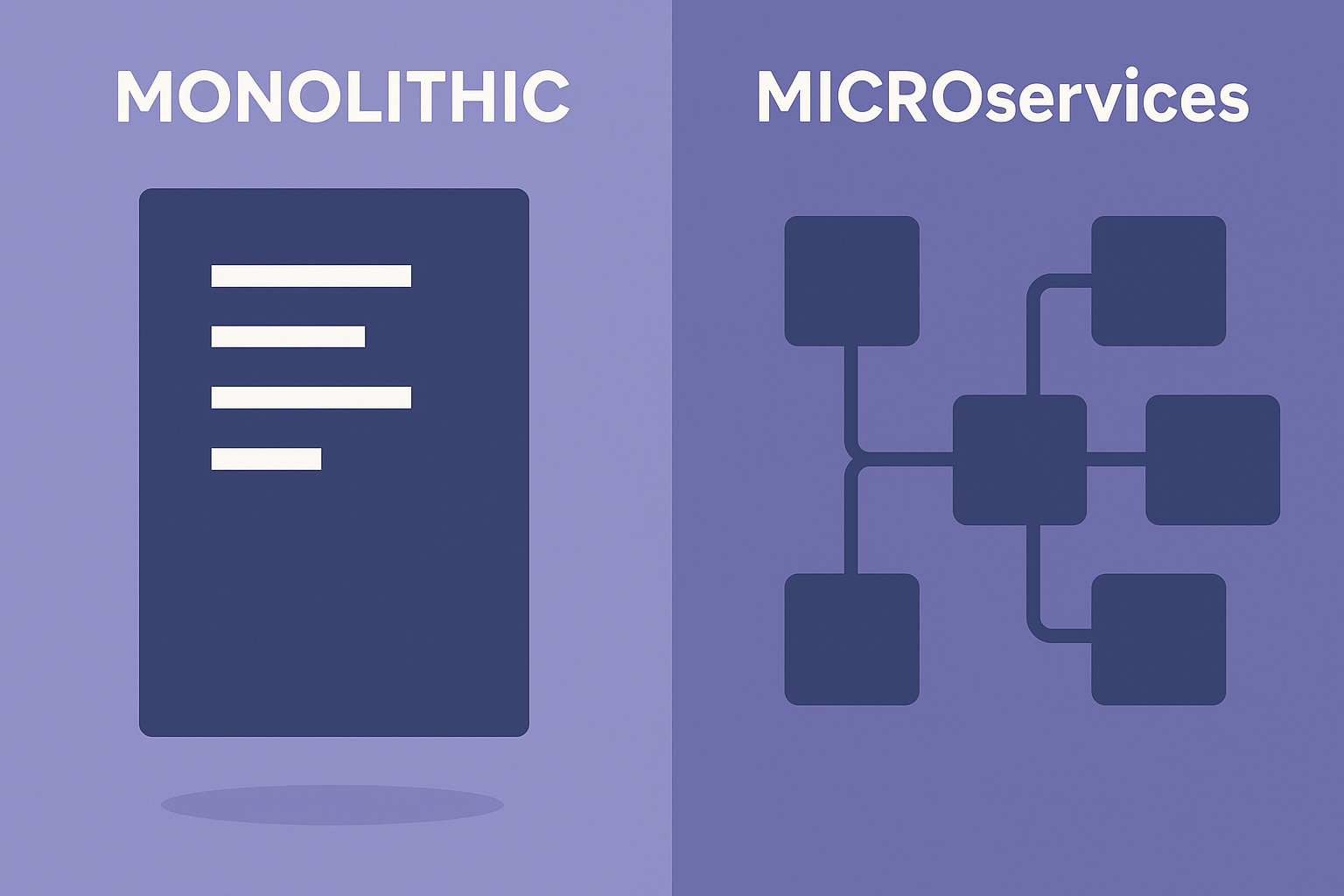Monolithic vs Microservices Architecture Which One Should You Choose?

Introduction
When developing software applications, choosing the right architecture is crucial for scalability, maintainability, and performance. Two popular architectural styles are monolithic and microservices. Monolithic architecture involves a single unified codebase, while microservices architecture breaks an application into smaller, independent services. In this blog, we’ll compare monolithic and microservices architectures to help you decide which is best for your project.
What is Monolithic Architecture?
A monolithic architecture is a traditional software development approach where the entire application is built as a single, unified unit. All components, including UI, business logic, and database operations, are tightly integrated.
Advantages of Monolithic Architecture
- Simpler Development: Easier to develop, test, and deploy.
- Performance: Efficient communication between components as everything runs in a single process.
- Easier Debugging: Unified codebase makes debugging and monitoring simpler.
- Lower Infrastructure Cost: Requires fewer resources compared to microservices.
- Better for Small Applications: Ideal for startups and small-scale applications.
When to Use Monolithic Architecture
- When building a simple, small-to-medium-sized application.
- When rapid development and deployment are required.
- When maintaining a single codebase is preferable.
What is Microservices Architecture?
Microservices architecture is a modern approach where an application is divided into smaller, independent services that communicate via APIs. Each microservice is responsible for a specific function and can be developed, deployed, and scaled independently.
Advantages of Microservices Architecture
- Scalability: Easily scales individual components without affecting the entire system.
- Technology Flexibility: Different services can use different technologies, programming languages, or databases.
- Faster Deployment: Teams can deploy updates independently without impacting the whole application.
- Fault Isolation: A failure in one service does not bring down the entire system.
- Better for Large Applications: Ideal for complex applications requiring high scalability and distributed development teams.
When to Use Microservices Architecture
- When building large, complex, and scalable applications.
- When different teams work on different parts of the application.
- When continuous deployment and independent service scaling are needed.
- When high availability and fault tolerance are required.
Key Differences Between Monolithic and Microservices
|
Feature |
Monolithic Architecture |
Microservices Architecture |
|
Codebase |
Single, unified application |
Multiple independent services |
|
Scalability |
Limited, scales as a whole |
High, scales individual services |
|
Deployment |
Entire application deployed together |
Services deployed independently |
|
Technology Stack |
Single tech stack |
Multiple tech stacks possible |
|
Fault Isolation |
Failure affects the entire application |
Failure is isolated to a single service |
|
Complexity |
Easier to develop and manage |
More complex due to service communication |
|
Best for |
Small to medium apps |
Large, scalable applications |
Conclusion
Choosing between monolithic and microservices architecture depends on your application’s complexity, scalability needs, and team size. If you’re developing a small-to-medium-sized application with simpler requirements, a monolithic architecture is easier to manage and deploy. However, if you need a highly scalable, flexible, and fault-tolerant system, microservices offer the best solution.
For startups and businesses in the early stages, monolithic architecture is often the best choice. As the application grows, transitioning to microservices can help scale efficiently. Ultimately, selecting the right architecture depends on your project’s requirements, future scalability, and operational complexity.
7 months before